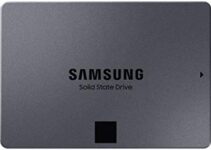Elon Musk is a master of promoting new technology ideas, but of course not all of them come to fruition.
Yes, Musk’s Tesla (TSLA) has become the world’s biggest EV maker and most valuable automobile company, but that hyperloop thing has really fallen by the wayside. And Tesla’s full self driving software is still in beta. And of course, nobody’s even seen a Cybertruck in the wild because they’re not going to start making them until next year.
Such is the fate of visionary disrupters, of course. And overall, it’s probably fair to admit that Musk has delivered on a lot more ideas than most people have even had.
The End of a Big Communications Problem
Now, Musk and T-Mobile have announced plans to offer technology to end one of the cell phone industry’s biggest problems.
Musk and T-Mobile’s CEO discussed the new technology at an event at the SpaceX Spaceport in Texas on Thursday, Aug. 25.
Starlink, the low-earth-orbit satellite network operated by SpaceX is set to start launching a new generation of satellites next year. “The Starlink second generation satellites will be able to transmit directly to your cell phone,” Musk told the crowd at the event. “No more dead zones, in a nutshell.”
The technology holds promise to offer cell phone coverage over the entire U.S., and ultimately the rest of the world, as well as U.S. territories, and big parts of the world’s oceans.
And users won’t have to add anything to their phones, according to Musk. “You don’t need to point it at the sky,” Musk added.
Scroll to Continue
There are Caveats
There are a number of caveats to be considered, however.
In the first place, the service won’t begin by offering voice transmission. Instead it will start off with so-called asynchronous message data, that doesn’t require instantaneous back-and-forth transmissions.
In the second place, the system’s “cells” will be much larger than those of land-based cell towers, meaning more people will be competing to use the available bandwidth. Musk said the satellites will ultimately be able to handle 1,000 to 2,000 voice calls per cell. So, although it will ultimately provide a backup, “it’s not a substitute for ground cell stations,” Musk said.
In the third place, launches of the new satellites won’t begin until next year, meaning the full service is still a long ways from being operational.
In the fourth place, the antennas required for the system will be quite large, on the order 25 square meters, according to Musk. That’s because “you have to have big ears” to pick up cell phone signals from space.
It’s that last caveat that leads to the big question mark over the project. That’s because it turns out that SpaceX’s regular Falcon 9 rockets aren’t big enough to launch the new satellites. Instead the company will have to rely on its much larger, but still unproven Starship to lift the satellites into orbit.
The Starship could have a test launch later this year. The company is conducting a static fire test of one of its huge booster rockets later this month.
However, Musk told the audience that as a backup plan, a smaller version of the second generation satellites could be developed to launch on the existing reusable rockets, which have scores of missions under their belts.
![15 Wearable Technology Statistics [2023 Edition] 15 Wearable Technology Statistics [2023 Edition]](https://cheapestgadget.com/wp-content/uploads/2023/08/110377-15-wearable-technology-statistics-2023-edition-211x150.jpg)

